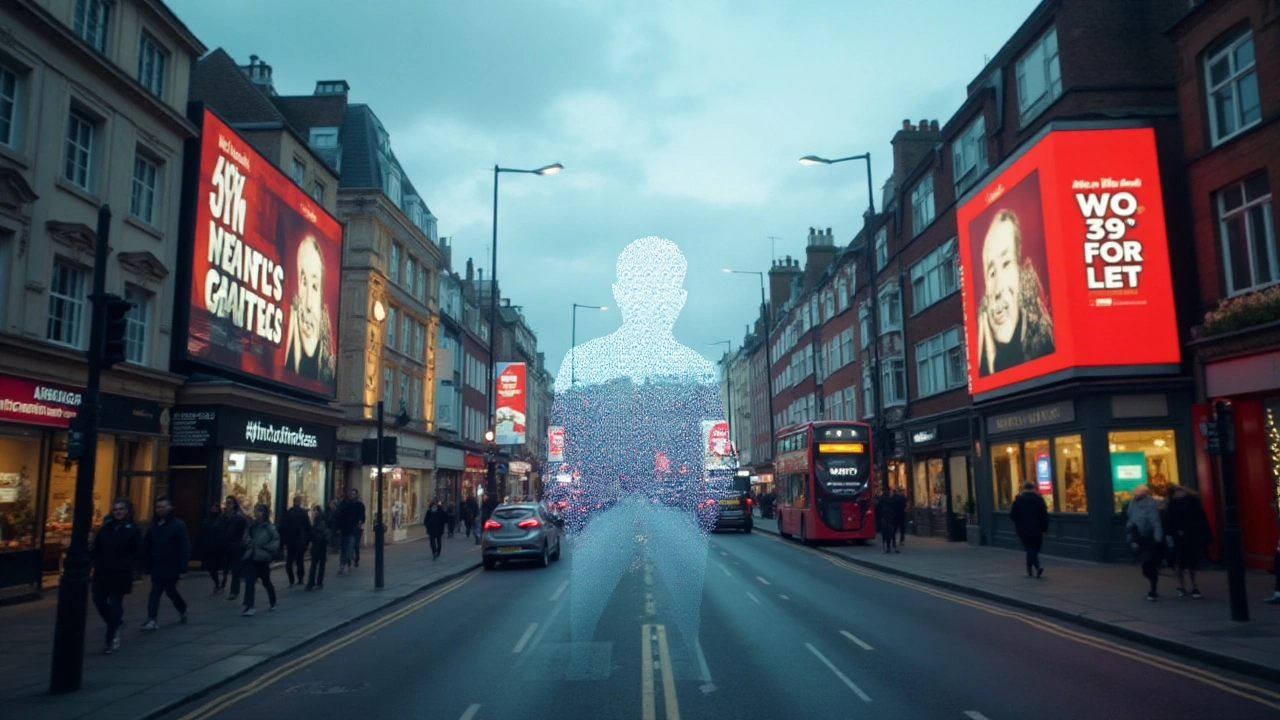Understanding ChatGPT's Role in Modern Propaganda

In today's digitized world, the lines between reality and narrative can blur as quickly as a tweet can go viral. This environment has paved the way for novel forms of communication, peppered with both opportunity and risk. One such transformative player is ChatGPT. An innovation that has caught the public's imagination, it serves as much more than just a tool for generating text.
Understanding its role requires unraveling both the promise and the propaganda. On one side, you have a tool with the potential to revolutionize human interaction, offering insights and accessibility like never before. But on the flip side, there's a world where misuse could foster misdirection, intentional or not. This article delves into both aspects, aiming to lift the veil on what ChatGPT truly means for society's communication landscape.
- The Evolution of Propaganda
- Introducing ChatGPT
- The New Frontier: AI in Propaganda
- Potential Benefits of AI in Communication
- Risks and Ethical Concerns
- Fostering Responsible AI Use
The Evolution of Propaganda
The concept of propaganda isn't new; it has been a companion to human civilization throughout history, shaping opinions and influencing decisions across societies. Early on, it appeared through mediums like oratory and sculpture, where leaders and religious institutions crafted messages that directed the public's perception and morale. With the advent of the printing press in the 15th century, the game changed significantly. Suddenly, leaflets and pamphlets could be reproduced on a large scale, disseminating information—and misinformation—with unprecedented speed. The power to sway minds was no longer confined to spoken words or grand designs of architecture, but now lay in ink on paper, ready to be distributed among the masses.
This trend only amplified with the progress of time. As new technologies emerged, each brought along novel techniques for the dissemination of information. The 20th century, characterized by rapid technological advances, brought about the rise of radio and television. Governments and political movements quickly realized the potential of these mediums for spreading their agendas. The world witnessed this during the world wars, where radio broadcasts became a powerful tool for national propaganda, swaying public opinion both at home and abroad. Television added a whole other dimension, combining visual impact with auditory persuasion. As a result, the reach and frequency of propaganda messages grew exponentially. Walter Lippmann, an American writer, once said, "The public has an insatiable curiosity to know everything, except what is worth knowing." His words remind us of the power imbalance that often exists in the dissemination of information.
In today's digital age, the evolution continues. The internet revolution has allowed for a level of interaction and immediacy that traditional media could not offer. Social media platforms have become the 21st century's global megaphones, transcending borders to spread messages rapidly and widely. Unlike the passive consumption of information via radio or TV, the internet empowers users to actively participate in the information cycle. This has transformed every individual into a potential creator and distributor of propaganda—sometimes deliberately, other times through unwitting spread of misinformation. The role of technology in shaping public opinion has never been more complex or impactful.
As we stand at the intersection of artificial intelligence and communication, the potential for tools like ChatGPT to become instruments in this evolutionary arc of propaganda is immense. It offers possibilities for personalized and seemingly authentic interactions on a grand scale, raising new questions about the nature of persuasion in this modern era. ChatGPT's capabilities could redefine the landscape by providing tailored content that feels personal. But this power also calls for responsibility. How these tools are harnessed will determine whether they serve as forceful agents of enlightenment or instruments of deception, dictating trust within our interconnected world.
Introducing ChatGPT
ChatGPT represents the culmination of years of dedicated research in the field of artificial intelligence, created by the team at OpenAI. This model is a variant of the Generative Pre-trained Transformer (GPT) series, specifically designed to understand and generate human-like text with incredible precision. By training it on a vast corpus of internet text, engineers have endowed ChatGPT with the ability to comprehend various contexts, making it a valuable asset in numerous applications.
Behind its charming conversational style lies a complex architecture involving billions of parameters. These parameters work together like neurons in a brain, allowing the model to predict the next word in a sentence or to respond thoughtfully to a user's query, demonstrating a remarkable grasp of context. The training process involved presenting the model with text from diverse sources and asking it to predict missing words, thereby honing its language capabilities. This repetitive learning strengthens its predictive power, enabling it to craft responses that often feel surprisingly human.
The ChatGPT model has been revolutionary in various industries, from customer service to content creation. By automating tasks that were once time-consuming and labor-intensive, it frees up human experts to tackle more complex problems. Its versatility also allows it to engage in a range of dialogue styles, whether it be formal, casual, or informative, making it adaptable to different needs. Critics, however, caution about reliance on AI-generated text, pointing out potential issues of accuracy and bias due to the very data on which it was trained.
"With tools like ChatGPT, we are ushering an era where AI can assist in tasks that require both creativity and precision," said Sam Altman, the CEO of OpenAI, highlighting the enthusiasm within the tech community about this advancement.
As we delve deeper into the capabilities of ChatGPT, some see it as a storytelling assistant, capable of generating ideas and drafts that spark human creativity. Artists, writers, and educators have found it to be a great companion in brainstorming sessions. The amusing part is how it can mimic different writing styles, often leading to delightful surprises. Yet, it remains a tool, and much like any tool, its effectiveness depends on how it is wielded by its human operator.
While the public sees ChatGPT as an adept conversationalist, researchers are more intrigued by its subtle ability to discern intent and context, which paves the way for an exciting future. What lies beyond mere text generation is a collaborative potential where humans and machines augment each other's capabilities, achieving what neither could accomplish alone. Such collaboration raises questions about ethical deployment and the respect of privacy and security norms, ensuring a dialogue between users and developers continues to evolve.

The New Frontier: AI in Propaganda
As we venture into the age where artificial intelligence intertwines with the fabric of our daily lives, the emergence of AI in shaping public opinion and steering propaganda presents both revolutionary potential and daunting challenges. Gone are the days when cunning political posters and radio broadcasts were the primary vehicles of mass influence. Today, the role of AI, including technologies like ChatGPT, adds a sophisticated layer to how messages are crafted and disseminated. These tools possess the unique capability to churn out human-like conversations, crafting narratives that can be easily personalized and evoking relatable emotions across diverse demographics. This level of bespoke communication was a distant dream a few decades back, yet it has ushered in an era where artificial scripts feel increasingly genuine.
The essential landscape of propaganda has shifted from traditional centralized methods to a more innovative form of narrative weaving. AI systems can now sift through massive quantities of information almost instantly, identifying points of sensitivity or topics of interest to create content that resonates. A well-crafted AI-driven campaign can reflect sentiments and quirks of its target audience, appearing more authentic and relatable. This conversational artificial intelligence can simulate conversational nuances, potentially deceiving users into believing they are interacting with genuine sources or individuals, thus blurring the lines between untainted information and manipulated deceit. It’s this powerful potential for influence that invites both scrutiny and fascination.
ChatGPT and tools like it amplify this ability by offering efficiency and scale that human efforts could never match. AI can curate and learn from interactions almost independently, even predicting the kinds of responses that will keep users engaged or persuade them to change their opinions. It’s crucial to acknowledge this power, as with great technological prowess comes a frayed moral compass. The ease of spreading manipulated or biased content raises pressing questions about ethics and accountability in the artificial domain. As AI learns from patterns found in public discourse, the implications of echoing or amplifying false information become profound, threatening to destabilize trust and reality itself.
One notable example of AI's profound impact on communication is illustrated by an OpenAI study that highlights AI’s potential to enhance conversational fluency and personalization at scale. According to OpenAI, “The ability of AI to engage in dialogue has never been more crucial in understanding and addressing the complexities of our world.”
The rapid spread of disinformation has underscored the need for these technologies to be wielded responsibly,With these advancements, we are nudging closer to a future where AI could be used not just for connectivity but redefining the very essence of human conversation.
a sentiment echoed by numerous tech ethicists and industry leaders.
While the bespoke nature of AI-generated propaganda presents concerns, there are glimmers of the benefits it could usher in with the right safeguards. With conscious oversight, AI can facilitate more informed and inclusive dialogues, bridging gaps in understanding and thus promoting a more nuanced worldview. This frontier, however, is not one that can be traversed blindly; it demands careful navigation. Policymakers, tech enthusiasts, and ethicists must collaborate to ensure that AI is used as a force for good, preventing malicious actors from weaponizing it to sow chaos or discord in the lotus of society.
Potential Benefits of AI in Communication
The digital age presents us with an array of tools to enhance our ways of communicating, and at the forefront of this revolution is the inclusion of ChatGPT in everyday conversations. This tool has brought about remarkable shifts in how information is shared and processed in real time. Imagine being able to ask nuanced questions and receive comprehensive answers almost instantly; this is just one of the many ways AI is facilitating advancement in communication. A distinctive feature of AI like ChatGPT is its ability to engage in detailed discussions, offering logical responses drawn from vast databases of information. It can track the context of ongoing conversations, adapting to subtle cues and shifts in discussion topics.
Equally important is the role of AI in leveling the playing field for global communication. Language barriers, which once seemed insurmountable, are gradually eroding as translation tools powered by AI are becoming more refined and precise. These tools are capable of handling languages from different parts of the world, allowing for smooth interpersonal exchanges that were once strained or impossible. This increase in language accessibility aids not just travelers but also businesses seeking global expansion, creating an interconnected global marketplace. A CNN report noted the rise in AI-driven language tools which have improved the accuracy of translations by 20% in recent years.
"The advancements in AI translations are making global communication more seamless," said linguist Anna Kristen, highlighting the transformative impact of AI.
Moreover, the integration of technology in communications has a profound effect on learning environments. Within educational settings, AI can personalize the pace of content delivery to suit individual learning styles, revolutionizing how information is imparted and retained. AI tutors, for example, provide personalized learning experiences by adapting to each student's progress, offering assistance tailored to their unique learning needs. The accessibility of AI-facilitated learning resources allows for inclusivity, especially for students with learning disabilities who often need specialized instructions and assistance. This facet proves invaluable in making learning more inclusive and accessible. Studies by educational researchers show that students using AI tools demonstrate a 15% increase in comprehension rates across various subjects, underscoring the tangible benefits of AI in education.
All these points illustrate how AI, particularly through ChatGPT, is redefining the scope and scale of communication. Its ability to handle vast amounts of data instantly results in more well-informed conversations, bridging gaps that previously hindered fluid expression and understanding. As AI continues to evolve, we can expect even more dynamic shifts in how information circulates, leading to rich and more diverse dialogues across the globe.

Risks and Ethical Concerns
The advent of ChatGPT brings a mix of excitement and caution, primarily due to the potential risks and ethical dilemmas it presents. This tool, as powerful as it is, embodies the double-edged nature of technology—capable of profound good but equally adept at causing harm if misused. One of the foremost concerns is the potential for spreading misinformation. The ease with which ChatGPT can generate human-like conversations means it could be harnessed to craft misleading narratives, complicating the task of discerning fact from fiction. Given its ability to produce content at scale, the danger of spreading propaganda disguised as authentic communication is palpable.
Moreover, the ethical implications of using such AI systems in sensitive areas are profound. Privacy concerns are at the forefront, as conversations generated by models like ChatGPT could inadvertently expose personal or confidential information if not properly managed. The responsibility of ensuring user data is secure and not exploited poses a significant challenge. Another ethical consideration is bias. AI models, including ChatGPT, are as good as the data they're trained on. If the training data contains bias or reflects certain prejudices, the AI might replicate and reinforce these biases in its responses. This could lead to perpetuating stereotypes and reinforcing societal biases, which could have far-reaching consequences.
Additionally, the ethical conundrum of accountability arises when AI goes wrong. For instance, who holds responsibility if AI-generated content results in harm or spreads false information? Is it the creators, the users who utilize the tool, or the algorithms themselves? This gray area of accountability raises important questions about legal frameworks and ethical boundaries in the digital age. As technology rapidly evolves, so must our policies and ethical guidelines to ensure a balanced approach to innovation and ethical governance.
According to a report by Pew Research Center, experts warn that by 2025, AI's misuse, including in forming propaganda, could overshadow its benefits if regulations and ethical checks are not implemented. This statistic underscores the urgent need for global conversations about the responsible use of artificial intelligence.
"The challenge is not the technology itself but how we choose to use it. Our decisions now will shape the socio-political landscape for years to come," remarked renowned technology ethicist, Dr. Susan Benner. Her insight encapsulates the pressing need for ethical considerations surrounding AI deployment in society.
Conclusively, while the promises of ChatGPT are vast, navigating its risks demands a collective effort from developers, policymakers, and society as a whole. Ensuring that this powerful tool remains a force for good requires vigilance, transparency, and a steadfast commitment to ethical principles. As we stand on this technological precipice, the choices we make today will inevitably sculpt the contours of future communication landscapes.
Fostering Responsible AI Use
Fostering responsible use of artificial intelligence is not just a technical challenge; it’s a societal one. As AI models like ChatGPT become more ingrained in our daily communication, understanding and controlling their impact becomes paramount. These technologies hold immense potential to improve accessibility and enhance educational resources, but they also carry the risk of misinformation spreading if not handled with care. Developers, policymakers, and users all have roles to play in ensuring that AI serves public interest.
One essential aspect is implementing guidelines and standards that govern ethical AI deployment. These frameworks must be adaptable as the technology evolves and should prioritize transparency and accountability. Ensuring that developers are clear about how AI systems are trained, and the data they utilize, helps in building trust among users. Moreover, setting strict standards against bias in AI is crucial, as biased AI systems can lead to harmful societal impacts. Regular audits and assessments can aid in identifying and mitigating these risks effectively.
According to Tim Berners-Lee, inventor of the World Wide Web, "We have a moral responsibility to ensure that technology serves humanity." This philosophy underpins the imperative need for inclusive AI development that reflects diverse perspectives. For instance, involving ethicists and sociologists alongside engineers during the AI design process ensures outcomes that are fair and balanced. This interdisciplinary collaboration is vital to fostering technologies that respect cultural, social, and ethical diversity.
Engaging the public in conversations about AI is another critical step. By educating individuals on how AI works and its potential effects, people become informed consumers of AI-driven services. Community dialogues and workshops can empower users to contribute to discussions about AI’s role in society. It also provides invaluable feedback to developers about real-world applications and concerns, leading to improvements in AI design. This exchange of knowledge ensures AI remains a tool for empowerment rather than exploitation.
Moreover, investing in research to develop tools that detect and prevent misuse can preempt potential threats of abuse in propaganda. As AI grows capable of producing highly convincing content, establishing mechanisms to identify manipulated or malicious outputs becomes indispensable. Collaborations between tech companies, governments, and non-profits could yield innovative solutions that safeguard against these threats. This collaborative approach not only strengthens security measures but also promotes a culture of responsibility in tech evolution.
It's not just about the technology itself, but also how society chooses to implement and regulate it. By embedding ethical considerations at the heart of AI development, societies can leverage the incredible potential of technologies like ChatGPT to enrich lives without compromising values. The commitment to fostering a responsible AI ecosystem will determine if this era of technological advancement will truly serve the broader good.



